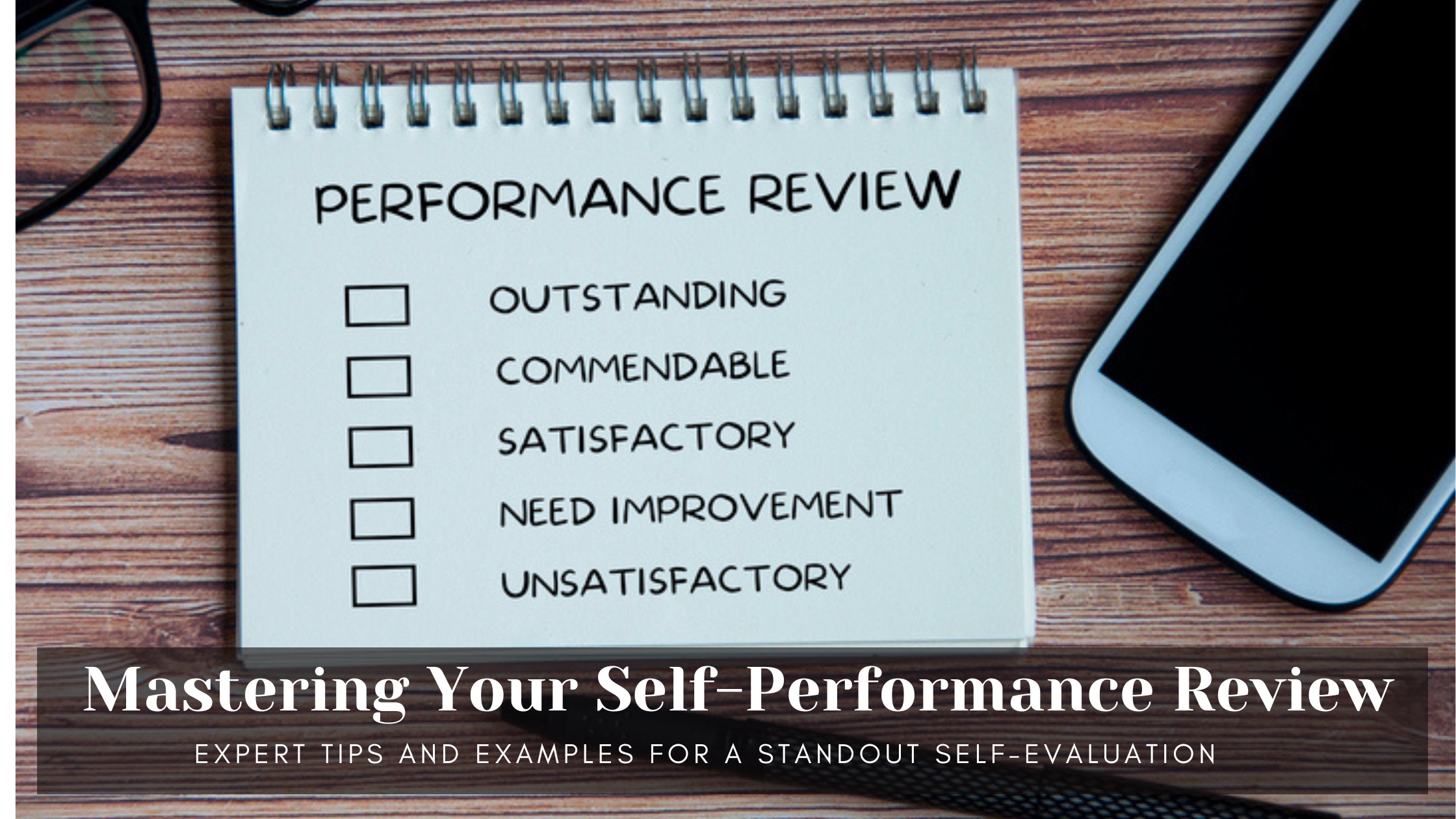
Writing a strong self-evaluation for your performance review can feel daunting, but it is a crucial opportunity to showcase your achievements, reflect on your growth, and set the stage for future development. Whether you’re preparing for an annual review or a mid-year check-in, crafting an insightful self-assessment can positively impact your career trajectory. This guide offers actionable tips, real-world self performance review examples, and a step-by-step approach to help you write a compelling self evaluation performance review.
Why Self-Evaluations Matter
Self-evaluations empower employees to take ownership of their performance, highlight their contributions, and identify areas for growth. They foster open communication with managers and help align individual goals with organizational objectives. A well-written self-performance review demonstrates self-awareness, accountability, and a commitment to continuous improvement.
Preparing for Your Self-Evaluation
Reflect Before You Write
– Assess Your Feelings: Start by honestly evaluating how you feel about your performance. Consider both your successes and setbacks. Jotting down unfiltered thoughts can help clarify your perspective before you formalize your self-assessment.
– Review Your Goals: Examine your progress against set goals or KPIs. For each objective, ask yourself what contributed to your success or what obstacles hindered you. Use these reflections to provide context in your self-evaluation.
– Gather Feedback: Look back at feedback from your manager or peers. Reference specific praise or constructive criticism to add depth to your review and show you value input from others.
Structuring Your Self-Performance Review
A clear, logical structure is essential for a self-evaluation that is both focused and impactful. Organizing your self-performance review in a thoughtful way not only makes it easier for your manager to follow, but also helps you present your achievements and growth areas in the best possible light. Use the following framework to guide your writing:
Introduction
Begin your self-evaluation with a concise overview of your role and core responsibilities. This sets the context for your review and reminds your manager of your main duties and objectives. You might mention your job title, your team or department, and the primary goals you are accountable for. This section should be brief-one or two paragraphs are usually sufficient.
Key Strengths and Accomplishments
This is your opportunity to showcase your most significant achievements and the strengths you bring to your role. Focus on outcomes and back up your statements with specific examples, data, or metrics whenever possible. Highlight projects you led, targets you exceeded, problems you solved, or positive feedback you received. Don’t forget to include both hard and soft skills, such as leadership, collaboration, or adaptability.
Areas for Improvement
Demonstrating self-awareness is a key component of any strong self-evaluation. Honestly acknowledge any challenges you faced or mistakes you made, but frame them as opportunities for growth. Explain what you learned from these experiences and outline the steps you are taking-or plan to take-to address them. This approach shows maturity, accountability, and a commitment to continuous improvement.
Reflect on the skills you have developed and any training or learning opportunities you have pursued. This could include formal courses, certifications, workshops, or informal learning such as mentoring or cross-team collaboration. Discuss how these new skills have contributed to your performance and set clear, actionable goals for your future growth.
Conclusion
Wrap up your self-evaluation by reaffirming your commitment to your role, your team, and the organization. Express enthusiasm for your ongoing development and your desire to contribute to the company’s goals. This section should leave your manager with a positive impression of your attitude and aspirations.
Tips for Writing a Strong Self-Evaluation
Be Honest and Self-Aware
– Acknowledge both your strengths and areas needing improvement. Transparency builds trust and shows maturity.
– Example: “While I consistently meet deadlines, I noticed that my attention to detail slipped during high-pressure periods. I am working on improving my time management to maintain quality under tight deadlines.”
Use Specific Examples
– Quantify achievements where possible. Numbers and concrete results make your contributions clear.
– Example: “I increased customer satisfaction scores by 15% this quarter by implementing a new feedback system.”
Focus on Solutions and Growth
– When mentioning weaknesses, frame them in terms of lessons learned and steps taken to improve.
– Example: “I struggled with delegating tasks early in the year, but after attending a leadership workshop, I have become more comfortable assigning responsibilities, which has improved team productivity.”
Align with Organizational Goals
– Show how your work supports the company’s objectives.
– Example: “By streamlining our onboarding process, I helped reduce new hire ramp-up time by 20%, supporting our goal of improving operational efficiency.”
Keep It Professional and Concise
– Avoid vague statements or excessive self-praise. Stick to relevant accomplishments and areas for growth.
Self Performance Review Examples
Below are categorized self evaluation performance review examples to inspire your own writing:
Strengths and Accomplishments
– Work Ethic: “I consistently meet project deadlines and have taken on additional responsibilities, such as mentoring new team members, without compromising quality.”
– Problem Solving: “When faced with a bottleneck in our workflow, I collaborated with the IT team to implement an automation tool, reducing processing time by 30%.”
– Innovation: “I introduced a new project management platform that increased team productivity and improved cross-departmental communication.”
– Leadership: “I led our team through a challenging product launch, delegating tasks effectively and ensuring all members were supported, resulting in a successful rollout.”
Areas for Improvement
– Time Management: “While I generally meet deadlines, I recognize that I sometimes take on too many projects at once. I am working on prioritizing tasks and delegating more effectively.”
– Communication: “I occasionally struggle to communicate complex ideas clearly. I am enrolling in a communication skills workshop to enhance my ability to convey information to diverse audiences.”
– Handling Pressure: “I have noticed that high-pressure situations sometimes impact my performance. I am adopting mindfulness techniques to better manage stress and maintain productivity.”
Professional Development
– “This year, I completed a certification in data analysis, which has enabled me to contribute more meaningfully to our quarterly reporting and strategic planning.”
– “I participated in a cross-functional training program, expanding my understanding of other departments and improving collaboration on joint projects.”
Practical Strategies for Writing Your Self-Evaluation
Keep a Year-Round Record
– Maintain a folder or document to log achievements, challenges, and feedback throughout the year. This makes it easier to recall specific examples when review time arrives.
Revisit Your Job Description
– Use your official responsibilities as a checklist to assess where you’ve excelled or faced challenges. This ensures your self-evaluation is relevant and comprehensive.
Apply the STAR Method
– Structure examples using Situation, Task, Action, and Result to clearly convey your contributions.
– Example:
– Situation/Task: “We faced a tight deadline for a major client deliverable.”
– Action: “I organized daily check-ins and delegated tasks based on team strengths.”
– Result: “We delivered the project ahead of schedule, earning positive client feedback.”
Common Mistakes to Avoid
– Being Too Vague: Avoid generic statements like “I am a hard worker.” Instead, provide specific examples and measurable outcomes.
– Ignoring Weaknesses: Skipping over areas for improvement can appear evasive. Address them honestly and constructively.
– Overlooking Soft Skills: Don’t focus solely on technical achievements. Highlight communication, teamwork, adaptability, and other soft skills.
– Neglecting Future Goals: Performance reviews are forward-looking. Set clear, achievable goals for your continued development.
Conclusion
A strong self-evaluation is more than a list of accomplishments-it’s a thoughtful reflection on your journey, an honest assessment of your strengths and growth areas, and a proactive plan for the future. By following these tips, using concrete self performance review examples, and structuring your self evaluation performance review with clarity and professionalism, you’ll not only impress your manager but also take meaningful steps toward your own career development.
Expand Your Skills with Relevant Courses
- Don’t Leave Money behind when Changing Jobs!
- Risk vs Reward: Do you know the Speed Limit?
- Retirement Planning 101: Start Saving Now!
- Planning for a Child’s Education – Importance of the 529
- Boost Retirement Savings: Health Savings Accounts Explained
- Financial Plan vs Financial Planning
- Personal Finance 101: Essential Basics for Young Adults




